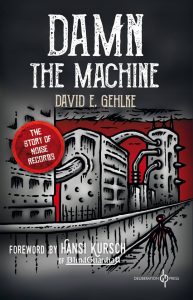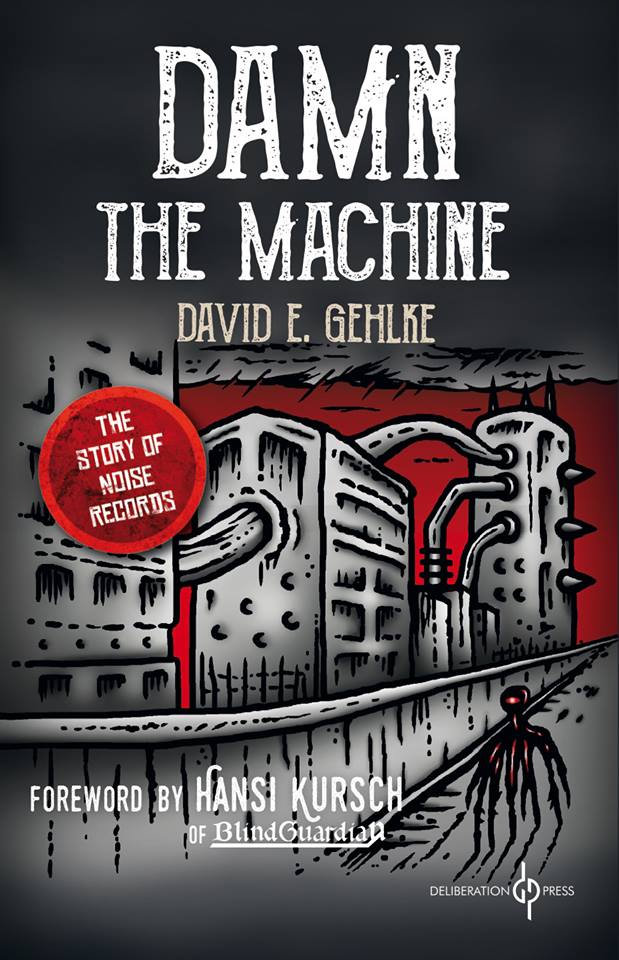 The year was 1988. And for the past 12 months a large portion of my purchases had been from the catalogue of just one record label: Noise International. I’d realised that I could pick up all the more mainstream metal releases from mates at school taped onto blank cassettes (I didn’t actually own an original copy of an Anthrax, Megadeth or Metallica album until into the 21st century when I updated my worn tape collection with CDs and vinyl). But through Noise, attracted by the colourful fantasy-oriented covers calling out from the racks of local independent record stores, myself and a band of intrepid metallers dreamed our way through 16 year-old adventure filled with vibrant music from what seemed like a world away.
The year was 1988. And for the past 12 months a large portion of my purchases had been from the catalogue of just one record label: Noise International. I’d realised that I could pick up all the more mainstream metal releases from mates at school taped onto blank cassettes (I didn’t actually own an original copy of an Anthrax, Megadeth or Metallica album until into the 21st century when I updated my worn tape collection with CDs and vinyl). But through Noise, attracted by the colourful fantasy-oriented covers calling out from the racks of local independent record stores, myself and a band of intrepid metallers dreamed our way through 16 year-old adventure filled with vibrant music from what seemed like a world away.
The US and UK, even then both becoming overly commercial, already felt bloated and too keen to reach out to the masses. It should, perhaps, have been clear for anyone who’d plugged into the many headed hydra proliferating from Noise, that the scene was already shifting Eastwards, away from the musical snobbery that dogs the London music scene and the marketing-led US – and into continental Europe. I’d encountered a few German bands – The Scorpions and Accept. But Noise was everything that so much metal in the 1988 was not: darker, brighter, faster and more full of the energy that many thrash bands now seemed to be losing. Given half a chance, I would have bought the entire catalogue just for the album covers alone. I’d tried a few Noise bands out on some of the kids in school – Kreator was cool and Helloween was already making a splash after the first Keepers release. But the more prog-power noise of Rage and the aggressive experimentation of Voivod seemed to stump my thrash-obsessed metal buddies.
But Noise founder Karl-Ulrich Walterbach, Damn The Machine more than ably tells us, was driven by the desire to find the next underground phenomenon. His love of the hidden gems of the punk scene, which he’d previously been involved with, seems to have given him an ear for unearthing bands from the fringes and serving them up to ever hungry and ever more eclectic metal tastes. Noise was a more than worthy rival to US specialists like Metal Blade. It had thrash. Walterbach made sure of that because, in 1986, thrash was metal. But it also had its eye out for something even more extreme. And it wasn’t just about Celtic Frost. In 1988 Turbo was one of the most extreme bands I’d ever come across as well as probably being the first band from Poland I’d encountered – which, with the Berlin wall still intact, enough to send my teenage brain spinning on many levels.
The book gives us plenty of insight into the mind of Kreator creator Mille Petrozza, who stands out as a solid character in a sea of mad young blokes who, predictably, could never separate the joys of being in a band from the hard work. There are casualties with regrets about what should have been. Money grabbing record label bosses (including, first among them, Walterbach). And egos on the rise. There’s a heart warming chapter on Running Wild – a band who, whatever you feel about them, offered stability that now seems far sighted and bold compared to how others caved in to the death of mainstream metal in the early 1990s. They followed the Walterbach credo of staying the course and it paid off. There’s also a few pages each to cover off Coroner, Sabbat, Rage and on the signing of Bathory for the release of the landmark Hammerheart. But there are only 502 pages here, remember.
I would have loved to read more about how on earth you find and sign a Polish band in 1988 (it’s mentioned obliquely), or what on earth happened to Michael Knoblich, the incredible singer on Scanner’s first album Hypertrace, still one of my all time favourite power metal albums. But you can’t have everything. Because, really, this book belongs to Walterbach and two bands: Celtic Frost and Helloween.
Where we really get down and dirty – as well as the path of destruction and pissed-off bands that Walterbach left in his wake – is the grim tale of Celtic Frost. A clear progenitor of black metal and death metal and whose albums stand like monoliths of creativity in metal scene so often swamped with sound-a-likes. Walterbach had a colourful, revolutionary past inspired Germany’s crazy socio-political scene, and had spent an 18-month stint in prison on the back of it (after police arrested him carrying a Molotov cocktail). He had been attracted by Celtic Frost’s extreme nature – but also the holistic imagery that would only later be picked up again and fully finessed as metal went back underground in the black metal scene. The details of Celtic Frost’s rise and rapid fall (with Cold Lake) under Noise may be familiar to many but the fine detail of the fractious nature of Tom ‘Warrior’ Fischer and Walterbach’s relationship still provides an entertaining tale that is both gripping and cringeworthy at the same time.
Then enter Helloween – a band that could be argued to be the polar opposite to the ‘Frost (although I still get goose bumps listening to Walls of Jericho – a much less shiny affair) – Noise’s most successful act and a band that created an entire subgenre of metal and is still yet to be bested by anything that followed the more-melancholy-than-people-seem-to-remember Keeper of the Seven Keys Pt 1. The blow by blow account of what happened next may just be what anybody who still dreams of an alternate reality where Hansen-Kiske-Weikath still play in the same band (although this year’s tour should help a little). The lesson is that some things are just not meant to be – even when things, from the outside at least, seem so perfect.
Noise’s impact on 1980s metal and its pivotal role in shifting the epicentre of metal and forging the rise of the Europeans should not be overlooked. This book will make sure of that. It’s a well written, ambitious book full of fascinating detail and some horrifying insights into the world of the music industry – or, ‘How People Who Like Making Money Shaft the Unwary’. David Gehlke splices together sometimes opportunitistic and seemingly endless interviews with artists in frank exchanges over what went right and what, so often, went wrong with their careers at Noise. Whatever his methods – the gaps will only bother the absolute completists. It’s thick with information that you sometimes want to skip over in the hurry to find out what happens next – only to find yourself tracing back to enjoy the journey to its fullest. These are the bands that helped power, fragment and ultimately propel metal through the dark days of the 1990s, afterall. It’s warts and all and anyone who was there in 1988 or who would like to know what was going on outside the usual big name bands and labels should pick themselves up a copy.
And, for what it’s worth……
My Top 11 Noise Releases (or ‘Why 1988 Was The Best Ever Year For Heavy Metal’):
1. Helloween – The Walls of Jericho (1985): even better than the real thing and proof that it’s all about Kai Hansen
2. Celtic Frost – To Mega Therion (1985): complete with cover art by HR Giger
3. Kreator – Pleasure To Kill (1986): Kreator’s second album and the one which helped see German thrash secure a place on the world stage
4. Voivod – Dimension Hatröss (1988): experimental thrash chaos
5. Sabbat – History Of A Time To Come (1988): pagan metal anyone?
6. Rage – Perfect Man (1988): once you’re sucked inside Peavey Wagner’s world, these 12 oddities soon become classic German prog-power masterpieces
7. Running Wild – Under Jolly Roger/Port Royal (1987/1988): still surprises me how good these are; save yourself the trouble of choosing and buy both for the original and seamless pirate metal voyage
8. Scanner – Hypertrace (1988): Still makes my all time metal top 10s; such a shame M.A.J.O.R. went M.I.A.
9. Coroner – R.I.P (1987): a fine example of the depth of the Noise catalogue
10. Turbo – Last Warrior (1988): fierce and innovative thrash metal from Poland from a time when ‘metal band from Poland’ meant absolutely nothing to anyone west of Berlin
11. Helloween – Keeper of the Seven Keys Part 1 (1987): last but not least and probably Noise’s most successful release; never bested in power metal and would still be a classic if it was released today
(8/10 Reverend Darkstanley)

Leave a Reply